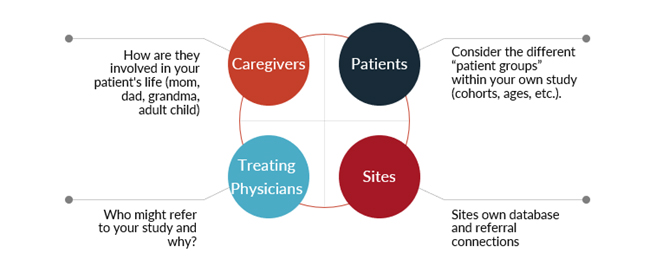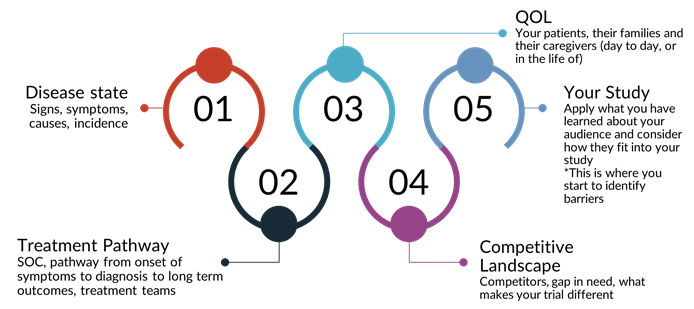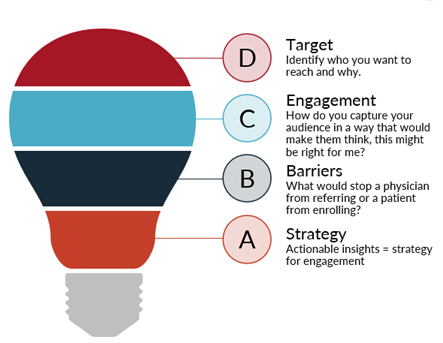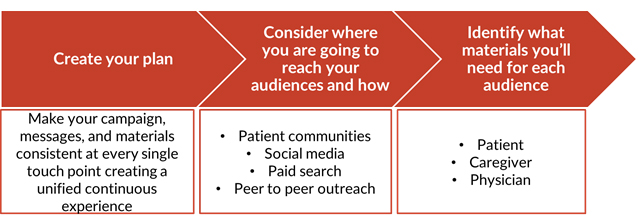Your Workbook To Create A Rare Disease Clinical Trial Strategy
By Halley Losekamp, director of patient enrollment, AGTC

It is no secret that when it comes to drug development, finding the right patients for a clinical trial is often a significant challenge faced by study teams and sites. An estimated 80 percent of trials don’t meet recruitment goal timelines, and delays in recruitment can be costly. Due to the immense challenge of finding the right patients, the industry of clinical trial recruitment and retention is expected to become a $5+ billion market by 2030. This is even more apparent in recruitment in the rare disease space, with the reality of smaller patient populations presenting an added challenge for organizations to overcome.
One of the most expensive phrases in business is, “we have always done it this way.” Clinical trials as a whole have continued to be plagued by this mentality, especially around patient recruitment. The first and most common approach during start-up is to either totally strip or drastically reduce the patient recruitment budget. The other approach is assuming study sites have the patients needed to meet enrollment goals. A huge misstep of study teams is having the mindset that, “if we build it (the clinical trial), they will come (the patients).” Over and over, we see that if you do not create a robust recruitment plan, especially in the rare disease space, recruitment goals will almost definitely fall short.
In the rare disease space, planning and creating a robust patient recruitment plan is essential. This will lay the foundation for the budget, tactics, and expectations needed to meet recruitment goals. In the beginning stages of planning for recruitment, the goal is to understand who your target audience is and create a meaningful connection to these patients, their caregivers, and providers.

Figure 1: Considerations for understanding your audience
In my work, I’ve identified and implemented a three-step process that can serve as a reference guide for your efforts and set you on a path toward success for clinical trial recruitment in rare disease.
Step 1: Develop An “Experience Pathway” To Understand What Is Important To Your Target Audience
You will start by creating the Experience Pathway, which is simply an outline of everything a patient, caregiver, and provider experiences both within and outside of your study. To do this, you will need to organize what you know and what you will learn. Start with a blank slate: pull out a sheet of paper or open a new Word document on your computer. Create different sections for each concept or area of interest you want to investigate and learn about. Some suggested headers for your sections are below. As you begin to fill in these different sections, take your time and be thorough. Once complete, this should be several pages long (if not longer). You can utilize Google, online patient communications, journal articles, and any other reference points where you can learn about your patient and their disease state.
- Disease state - This should span everything from onset of symptoms (in rare disease this is often before birth), incidence rate, comorbidities, different variations of the disease. Gather as much information about the disease state as possible; even nuances you think might not matter can be important.
- Treatment pathway – Consider the patient journey from onset of symptoms, timeline to diagnosis, treatment team members who may see and treat the patient. What do you know about the pathway? What can you learn about it? Where might your patient start to consider your clinical trial? Do not skip this step, as the treatment pathway might seem simple, but often it is quite complex. Understanding the patient journey along the treatment pathway will inform you of touch point opportunities where you have a high chance of connecting with the right patients for your study.
- Patient quality of life – QOL is an important consideration in both medical care and clinical trials. Understanding your patient’s day to day life and what obstacles they already face will help you create a patient-centric recruitment plan. The internet is full of patient stories. Read them. Utilize social listening by leveraging patient communities and advocacy relationships to help connect you to their experiences.
- Competitors in the space – Who else is working on clinical trials in this disease state? Use this to understand what these competitors are doing and identify all the ways in which your study fills an unmet need.
- Your study – What else is important to your study and your patient population? Consider what you have learned about your patient and the barriers to your study and how you can mitigate those to ease the burden of participation.

Figure 2: The experience pathway
Step 2: Create Strategy Through Actionable Insights
Now the fun part. Create your strategy and tactics through insights. Strategy is how you will achieve your recruitment goals, and it defines a specific course of action you will take to get there. To start, you need to pull insights from the Experience Pathway you created (step 1). This is where you start to solve the problem for how you will engage your patients, providers, and caregivers and what recruitment tactics are best for your study. This is a step that is often skipped because it is easy to pull out two or three things from the Experience Pathway and think your recruitment problems are solved. But consider a marathon. If you train by running only a few miles here and there without committing to the full training plan, the chances of being successful are slim to none. Marathon training is a progressive and intentional act and that is the same approach with planning for patient recruitment in clinical trials. The only way to give yourself the best chance of success is by being progressive and intentional. You could put together a brochure and a few Facebook ads, but will this be enough to meet your goals? The odds are against you. To reach your patients, you must market to them, which means getting the right message to the right people at the right place and time. Having no plan will result in little to no response from patients and providers. You do not have to be skilled at marketing or creating campaigns to figure out what is important to patients and their support teams. If you put in the time and effort up front, the Experience Pathway will tell you what your strategies should be.

Figure 3: Elements of creating actionable insights
Here are some questions to get you started. Try to come up with at least three answers for each question:
- Where is the best place to find a potentially qualified patient?
- What would make a patient want to join your clinical trial?
- When in their journey would they learn about your clinical trial?
- Why would a patient choose your trial over others?
- Which physicians would be your targets for referrals and why?
- What would make a referring physician interested in learning about your clinical trial?
- Why would a physician refer their patient to your clinical trial?
Continue to think through your own questions. Repeat this exercise until you feel like you have a comprehensive strategy.
Step 3: Create A Personal Experience By Connecting The Dots
By now, you have created your Experience Pathways for your patients and their providers and have identified your strategy. The last step is to finalize your recruitment plans by creating their experience through supporting pieces (assets). In the virtual setting, especially in the rare disease space where these patients are often geographically scattered, it is important that what you put together has the patient and their needs front and center. This is where you can get creative.
Consider: Where are you going to find your patients and what assets do you need to reach them? Social media? You need content and ads. TikTok? You need content and videos. Treating physicians? You need letters, post cards, emails, brochures.
Once you’ve got their attention, where will they go to learn more? You’ll likely need a website, or even a landing page. What will your patients do on a website? Will they fill out a screener? Call a study site?

Figure 4: Plan creation and considerations
The key is remembering that each study is unique and will require its own unique strategy and plan. It is okay to launch outreach and tactics in phases by trying one tactic and assessing the results. Consider using two ads and test which gets better a response. Our industry is built on learning from failure and I strongly believe if we are not failing, we are not learning. Track each tactic and its success and turn “failure” into an opportunity for growth and improvement.
Most importantly, create a continuous experience for your patient, caregiver, and provider. From the moment they see an advertisement, to visiting the study website, all the way through to your study materials, you need a seamless and inviting experience.
In the end, a seamless, broad-reaching, and effective patient recruitment campaign is achievable. Put your investigative skills to work and dive in. Invest the time and effort up front, and you’ll see the rewards in the end.
About The Author:
 Halley Losekamp is director of patient enrollment at AGTC. She has more than 10 years of experience as a patient recruitment professional and believer of the clinical research as a care option (CRAACO). She specializes in physician engagement, clinical outreach, patient engagement, marketing, and feasibility. She has spent time across industry in the CRO, vendor, site, and marketing realms and understands that successful patient recruitment campaigns start and end with the patient.
Halley Losekamp is director of patient enrollment at AGTC. She has more than 10 years of experience as a patient recruitment professional and believer of the clinical research as a care option (CRAACO). She specializes in physician engagement, clinical outreach, patient engagement, marketing, and feasibility. She has spent time across industry in the CRO, vendor, site, and marketing realms and understands that successful patient recruitment campaigns start and end with the patient.
